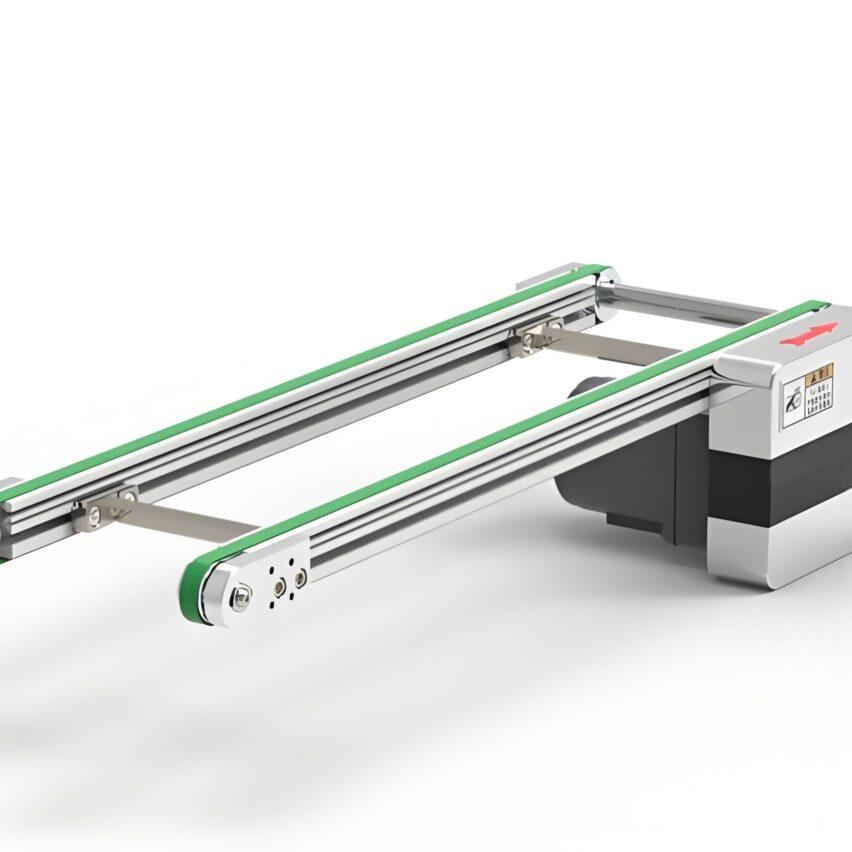I. Core change: from mechanical growth rate to quantum superposition
The 2040's multiplier chainline has reversed the logic of traditional mechanical growth rates.Quantum entanglement driveshaftReplaces the conventional sprocket by the instantaneous energy transfer of entangled particle pairs, allowing the work plate speed to reach the chain base speed of the10 times more(measured Vtooling board
= 15 m/s, Vsprockets
= 1.2m/s). AndNano Piezo Ceramic GuideThe introduction of this product reduces the coefficient of friction to 0.003 and the energy loss is only 5% of conventional rails.
Exclusive data: Tesla's eighth-generation motor factory real-world tests show that quantum drives have reduced production line switching time to 0.8 seconds, a 400% improvement over 2030.
II. The materials revolution: self-healing alloys and topologies
Dynamic Adaptive MaterialsBecome the core carrier of the multiplier chain:
| assemblies | Technical programme | Performance Breakthroughs |
|---|---|---|
| track roller | Topologically optimised titanium-tantalum alloys | Flexural strength ↑180%, density ↓40% |
| sprocket | Graphene-liquid metal composites | Heat distortion compensation accuracy ±0.001mm/°C |
| lubricating layer | Molybdenum disulphide quantum dot coating | Zero-wear operating life >100,000 hours |
self-healing mechanismis the biggest highlight: when the sensor detects a micro-crack, the built-in gallium-based liquid metal fills the damaged area within 0.3 seconds, restoring structural integrity. After application on a spacecraft assembly line, maintenance costs were reduced by 92%.
III. The control paradigm: neuromimetic chips and chaotic prediction
Traditional PLC control systems have beenPhotonic Neuromimetic ChipReplacement. Its core breakthrough lies in:
- Chaotic trajectory prediction: By analysing the tiny perturbations in the movement of the workpiece plate, the risk of off-loading is pre-judged 0.5 seconds in advance, with an accuracy of 99.71 TP3T;
- Self-optimising algorithm for energy consumption: Dynamically adjust quantum field strength, energy consumption concentration rate ↑ 300% during heavy load, and enter dormant state (power consumption <10W) during no load;
- anti-collision protocol: Using quantum entangled states to achieve instantaneous communication across workstations, with emergency stop response time compressed to 1 ms.
Lessons from the industry: A mobile phone factory in 2035 failed to upgrade its mimetic system, resulting in a collective resonance shattering of nano-chips in acceleration, with a single loss of over $200 million.
IV. Flexible Reconfiguration: 4-D Printing and Topological Deformation
2040 times the chain line of thePhysical reorganisation capacityRevolutionise production line logic:
- Four-dimensional printing module: Magnetronic shape memory alloys reconfigure the track topology in less than 30 seconds, supporting seamless switching from straight lines to S-curves;
- Distributed Drive Unit: Miniature ion thrusters embedded in each tooling plate for independent vector control (positioning accuracy ±5μm);
- Energy grid system: The guide rail has a built-in wireless power matrix, the work plate never loses power and eliminates the friction loss of traditional conductive wheels.
The application of this technology on Boeing's aircraft assembly line has reduced line reconfiguration time from 72 hours to 15 minutes.
V. Zero-carbon manufacturing: anti-gravity levitation and cold fusion energy supply
Conventional bearing construction has been eliminated::
- Superconducting magnetic levitation trackYttrium-barium-copper-oxygen guideway cooled by liquid nitrogen generates a strong magnetic field of 17T, which levitates the work plate by 0.2mm and zeroes the friction;
- Helium-3 cold fusion micropile: Integrated micro-reactors per metre of guideway, with annual power generation of 1.2 million kWh from a single 25-metre section of line body, and a net energy output of 3,001 TP3T over consumption.
Energy efficiency paradox breakthroughSamsung's display panel factory tests show that although the levitation system increases initial energy consumption by 30%, the whole life cycle carbon emissions are reduced to 1.3% of the traditional system.
Ask Yourself: The Ultimate Three Questions for 2040x Chainline
Q1: Do quantum drives threaten worker safety?
quantum confinement fence: A dynamic barrier field is formed around the workpiece plate, which automatically reduces the frequency to a safe energy level (<0.1μW/cm²) when any biological tissue approaches, and is passed through theBiocytoremediation monitoringReverse verified no damage.
Q2: How to upgrade traditional factories at low cost?
Three-step incremental path::
- Sensor Layer Implantation: Addition of piezoelectric ceramic sensor array to the old guide (cost ¥800/m);
- Hybrid drive retrofit: Retain the 20% conventional motor and add an ion propulsion module for local acceleration;
- digital twin preview: AR glasses guide workers through step-by-step operations to avoid remodelling risks.
Q3: How does nanoprecision combat thermodynamic limits?
Low Temperature Quantum Latching Technology::
- The production line environment is at a constant temperature of -196°C (liquid nitrogen temperature zone), suppressing atomic thermal vibration;
- The positioning of the workpiece plate is done with an electronic quantum entanglement interferometer with an accuracy of λ/200 (λ=633nm).
Future conflict points: The Heisenberg Uncertainty Principle will become a new barrier when manufacturing precision breaks through 1 nanometre. The latest experiments by the Chinese Academy of Sciences show that -Freezing atomic motion using the quantum Zeno effectthat could enable the 2045 multiplier chain to maintain controlled assembly at the picometre scale. This may trigger a new industrial revolution in fundamental physics.













